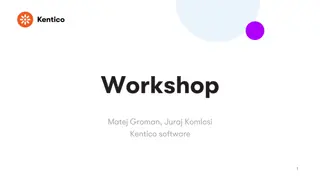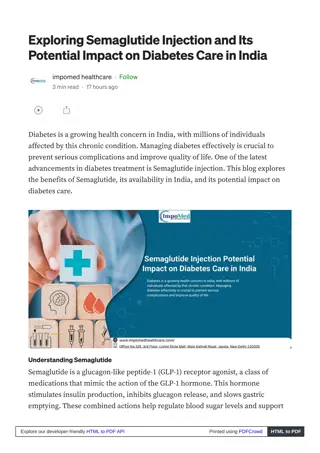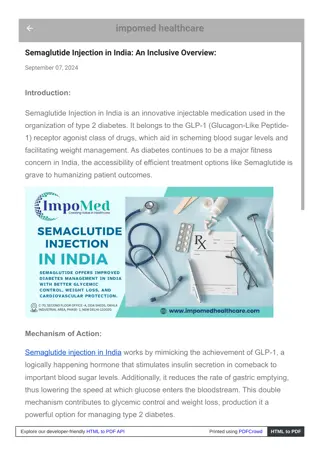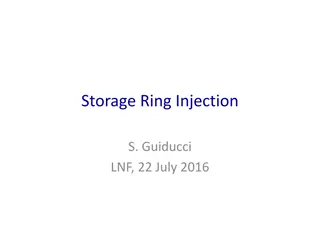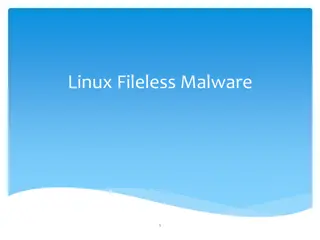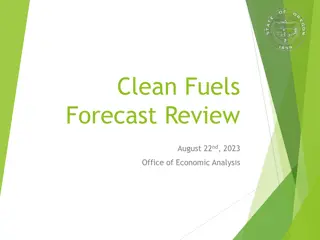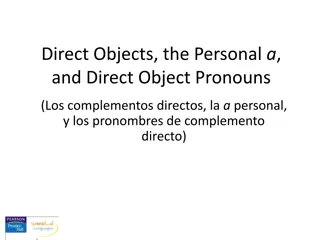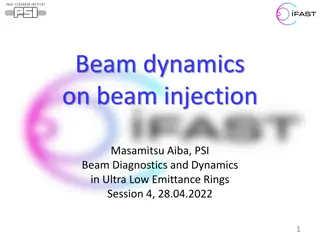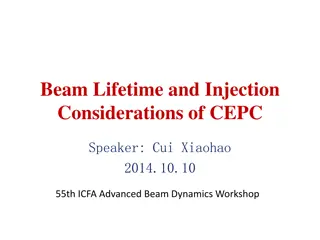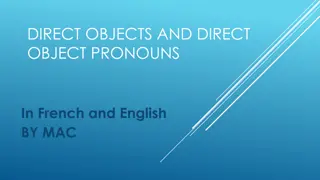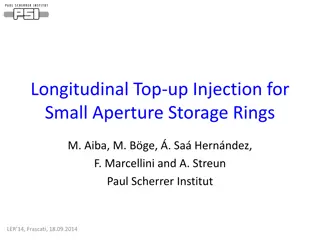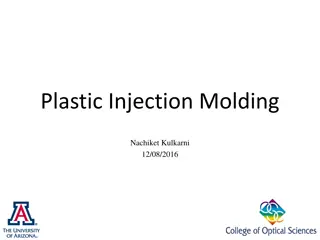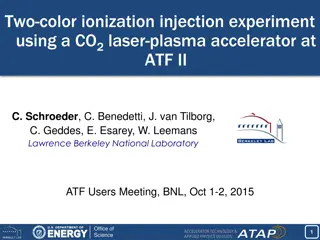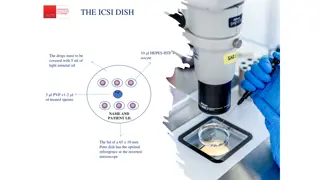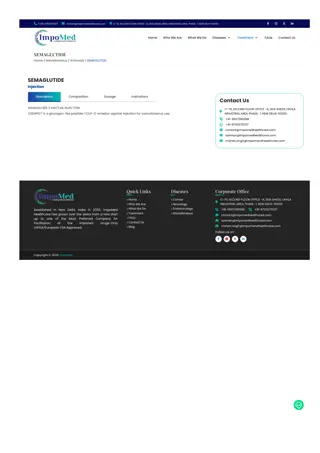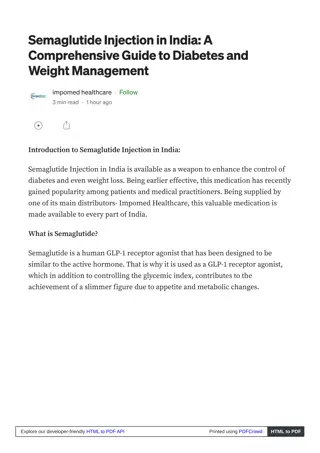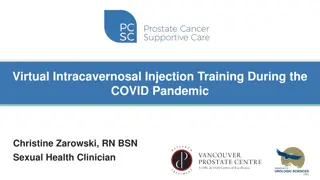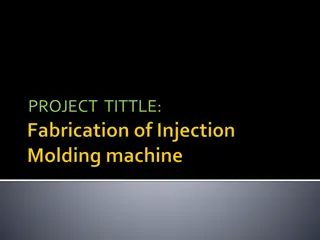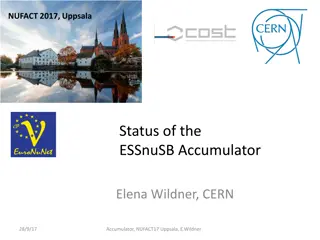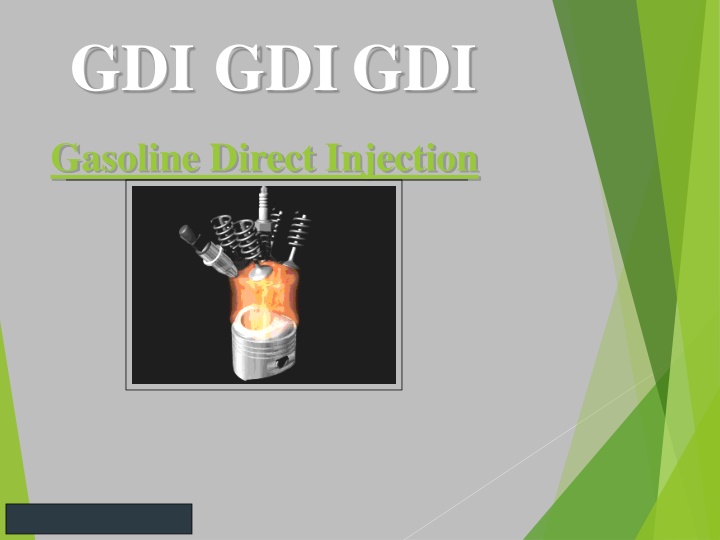
Electronic Fuel Injection: Advantages, Components, and Implementation
Explore the transition from carburetor to electronic fuel injection, including the advantages, main components like engine control unit and sensors, and the implementation of multi-point fuel injection and gasoline direct injection. Understand the technical features and major characteristics of the GDI engine for lower fuel consumption and superior output.
Download Presentation

Please find below an Image/Link to download the presentation.
The content on the website is provided AS IS for your information and personal use only. It may not be sold, licensed, or shared on other websites without obtaining consent from the author. If you encounter any issues during the download, it is possible that the publisher has removed the file from their server.
You are allowed to download the files provided on this website for personal or commercial use, subject to the condition that they are used lawfully. All files are the property of their respective owners.
The content on the website is provided AS IS for your information and personal use only. It may not be sold, licensed, or shared on other websites without obtaining consent from the author.
E N D
Presentation Transcript
GDI GDI GDI Gasoline Direct Injection
THE WAY WE PROCEED... Introduction Advantages of Fuel Injection over Carburetor Main Components of Electronic Fuel Injection Electronic Fuel Injection Multi Point Fuel Injection Gasoline Direct Injection The Difference Between New GDI And Current MPI Technical features Major characteristics of the GDI engine Realization of lower fuel consumption Vehicle Fuel Consumption Realization of Superior Output Achievements Conclusion
INTRODUCTION Transition of Fuel Supply System Port Injection Direct Injection Carburetor (MPFI) (GDI)
ADVANTAGES OF FUEL INJECTION OVER CARBURETOR Fuel injection has no choke, but sprays atomized fuel directly into the engine. Electronic fuel injection also integrates more easily with computerized engine control systems. Multi port fuel injection delivers a more evenly distributed mixture of air and fuel to each of the engine's cylinders. Sequential fuel injection improves power and reduces emissions.
MAIN COMPONENTS OF ELECTRONIC FUEL INJECTION 1. Engine Control Unit 2. Sensors 3. Fuel Injectors Engine Control Unit (ECU) ECU is a computer that controls all of the electronic components on the engine. ECU Engine Exhaust Open loop Operation mode Oxygen Sensor ECU Engine Exhaust Closed loop Operation mode
Sensors In order to provide the correct amount of fuel for every operating condition, the ECU has to monitor a huge number of input sensors.
Fuel Injectors A fuel injector is nothing but an electronically controlled valve. When the injector is energized, an electromagnet moves a plunger that opens the valve, allowing the pressurized fuel to squirt out through a tiny nozzle. It is controlled by the ECU. A pipe called the fuel rail supplies pressurized fuel to all of the injectors.
ELECTRONIC FUEL INJECTION 1. Multipoint Fuel Injection 2. Gasoline Direct Injection
MULTI POINT FUEL INJECTION SYSTEM Have a separate fuel injector for each cylinder . Have better cylinder to cylinder distribution. Eliminate the need to preheat the intake manifold
GASOLINE DIRECT INJECTION
COMPARISON WITH MPFI ITEM GDI Conventional MPFI Bore x Stroke (mm) 81.0 x 89.0 Displacement 1834 Number of Cylinders IL-4 Number of Valves Intake: 2, Exhaust: 2 Compression Ratio 12.0 10.5 Combustion Chamber Curved Top Piston Flat top Piston Intake Port Upright Straight Standard Fuel System In-Cylinder Direct Injection Port Injection Fuel Pressure (MPa) 50 3.3
BASIC TECHNICAL FEATURES OF GDI ENGINE The Upright Straight Intake Port. The Curved-top Piston. The High Pressure Fuel Pump. The High Pressure Swirl Injector.
MAJOR CHARACTERISTICS OF THE GDI ENGINE Lower fuel consumption and higher output Ultra-lean Combustion Mode Superior Output Mode
In-cylinder Airflow Click HereClick Here Fuel Spray Click HereClick Here Click HereClick Here Optimized Configuration of the Combustion Chamber
REALIZATION OF LOWER FUEL CONSUMPTION Basic Concept Click HereClick Here Combustion of Ultra-lean Mixture
Vehicle Fuel Consumption Fuel Consumption During Idling Fuel Consumption during Cruising Drive
REALIZATION OF SUPERIOR OUTPUT Improved Volumetric Efficiency Increased Compression Ratio
ACHIEVEMENTS Engine performance Vehicle Acceleration
CONCLUSION Frequent operation in stratified mode. Reduction of CO2 production by nearly 20 percent. Provides improved torque 5-10% Fulfills future emissions requirements. 97% NOx reduction is achieved. Improve the brake specific fuel consumption. Smooth transition between operation modes. Reduced fuel consumption 15-20% Up to 5% more power Spontaneous response behavior


